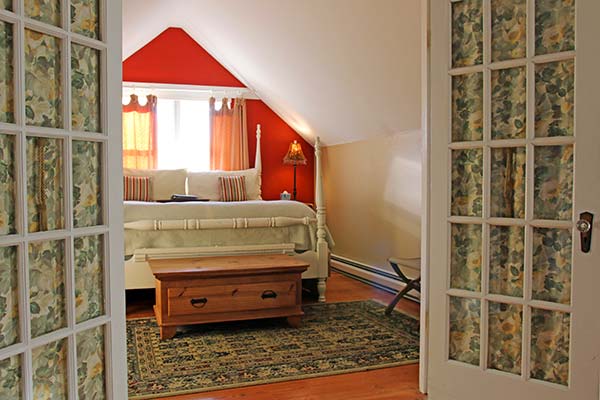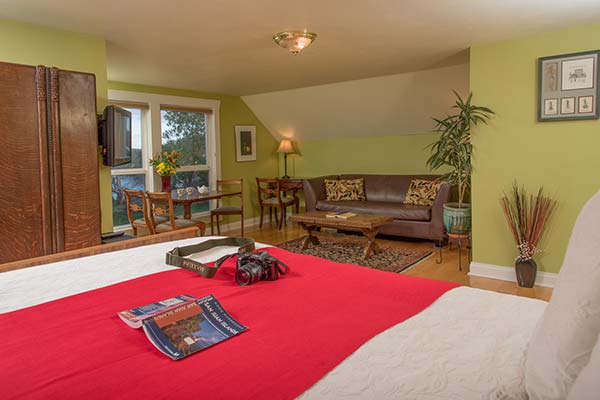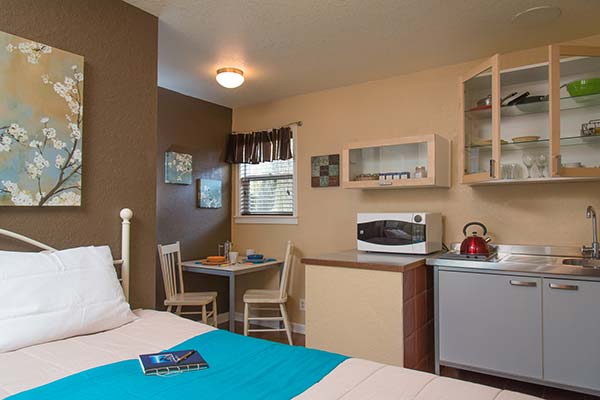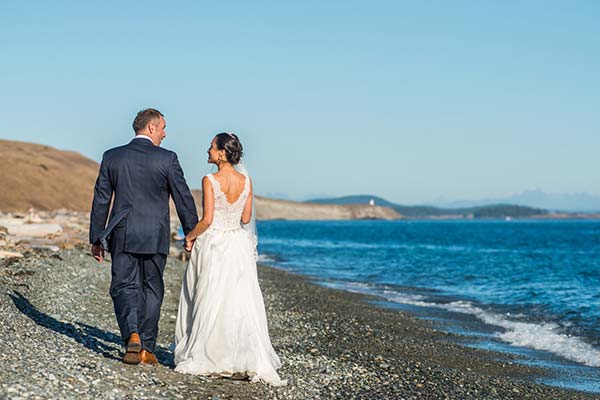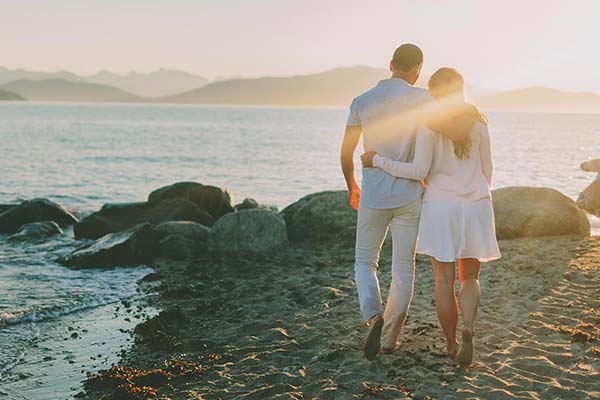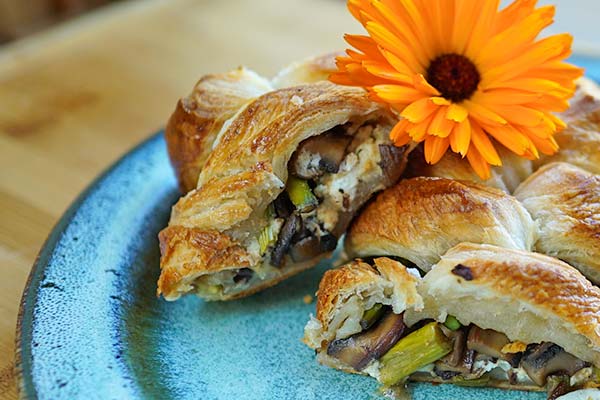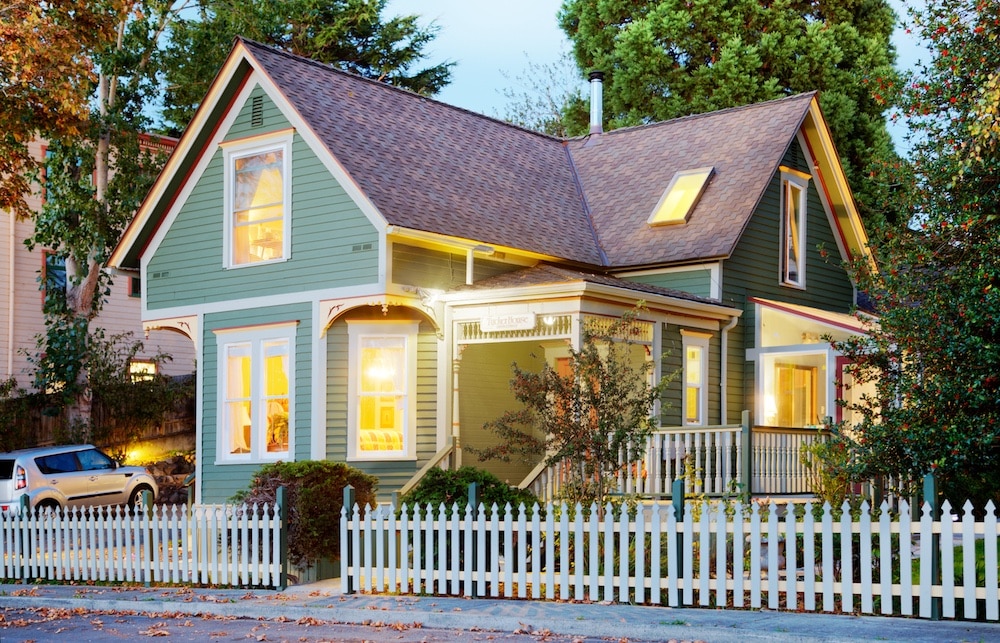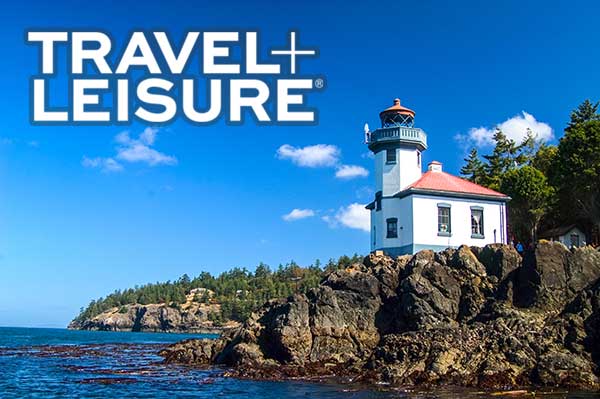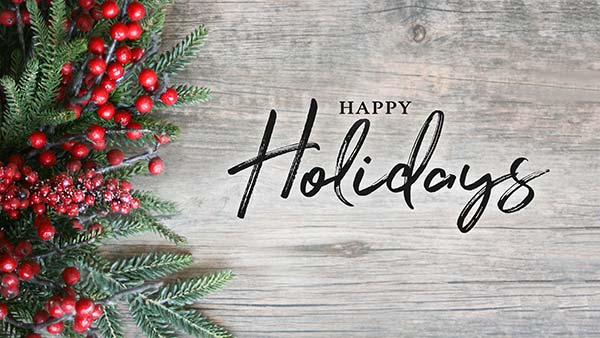The light in the skies over Friday Harbor, Washington in The San Juan Islands are a magnificent golden hue, illuminating the crimson, yellow, and green leaves as they dance with the breeze. At the Tucker House Inn, the property is filled with a kaleidoscope of color. Look deeply in the branches of our grandfather sequoia tree. You will surely find fine feathered friends securing their winter nests. Explore our island and you will see that many of the birds are visiting. The cooler months are the paramount time of year to bird watch in the San Juan Islands.
Q: What is the most thrilling sighting you have seen in this past month (October)?
A: The best birds of the autumn migration so far have been a Buff-bellied Sandpiper and a Ruff. These were both first-ever records for San Juan County.
-Mark Lewis, author of Birding in the San Juan Islands
PNW Birding
In the rain shadow of the Olympic Mountains, the island’s climate is very mild. This creates a perfect environment for visiting birds from the Arctic Circle. Each year, at least a billion birds migrate along the Pacific Flyway zone that stretches from the Arctic to the west coast of Mexico.
The birds are drawn to the San Juan Islands Marine State Parks and Refuges by the different varieties of habitats. Two portions of the park, American Camp and English Camp, offer diverse samples of these ideal habitats.
American Camp ranges from prairie, shrubby thickets and mixed coniferous and hardwood forest to open saltwater, sandy and rocky shoreline and brackish lagoons. Fourth of July Beach and Jakle’s Lagoon are big wintering spots for ducks, including buffleheads and harlequin ducks as well as common loons. Furry creatures galore also run about this rocky seashore. On your exploration you may spot a red- furred fox and numerous rabbits.
English Camp’s habitat includes a large protected bay, mudflats, grassy bald and rocky slopes, open woodland and oak savanna, and wet coniferous forest. Keep your eyes peeled for osprey, bald eagles, and snowy owls in treetops. Look to the mudflats for wading blue herons and mergansers.
Q: What bird are you most hopeful to see over the next three months?
A: I am hoping to find a Snowy Owl this winter as I have never personally seen one in the islands after 40 years! There have only been a couple of records of them occurring here. This species is irruptive and once or twice a decade an “invasion” of Snowy Owls escaping the tundra appear in the lower 48 states. The Skagit Flats are one of the best places in US to see them. But, despite the nearness of the flats, they have a fear of flying across open expanses of water (as do several other species such as Steller’s Jays and chickadees) and so are extremely rare on San Juan Island.
-Mark Lewis
National Parks
In the woodlands of both National Parks camps, you’ll find winter wrens, chestnut-backed chickadees and hummingbirds. On the prairies, look for great horned owls, and 18 varieties of raptors, from merlins (the magical little falcons), to peregrine falcons, to northern harriers (the thrifty marsh hawk).
While birding, you must use your “eagle eyes” –of which there is no shortage of here! The San Juan Islands has the largest concentrations of breeding and wintering bald eagles in the world. No matter where you are in the archipelago, out in the nature or exploring the urban wildlife of downtown Friday Harbor, keep those eyes peeled, there are truly eagles around every bend. Down on the southern tip of the island, in American Camp, you might see the most infamous breeding pair nested near the Ranger station, where they are commonly perched high in a tree keeping watch over Eagle’s Cove. The bald eagles have a wing span up to eight feet that they use to soar high over the rocky cliffs next to the Salish Sea or to glide seamlessly through the quiet winter streets of Friday Harbor.
In contrast, we have another winter resident whose wings span a mere 5 inches, the Anna hummingbird. This tiny species has been populating the San Juan Islands since the late 1970s. Their year round population has risen slowly ever since. Anna hummingbirds take refuge in the neighborhoods of Friday Harbor. They rely on the generosity of the town’s people to maintain their feeders. Take a lesson from these wise traveler’s of the Pacific Flyway. Seek refuge from the long winter months in the amazing San Juan Islands!
Q: Off the tip of your tongue—I say, favorite spot for bird watching on San Juan Island, you say ______?
A: American Camp due to its mix of habitats. Nearly all of the island’s habitats are represented there and the lack of development is attractive to some of the more sensitive species that avoid human disturbance.
-Mark Lewis
Schedule a Birding Tour
Gather your cozy clothes, big boots, and your best binoculars. The birds of the San Juan Islands are ready to shake their tail feathers for you. We will do our best dance to entice you here too. From driving through our beautiful island, map in hand, for a leisurely self guided tour. Or, we can help you find the best- suited tour with a nature guide on land or sea. A big thank you to expert, Mark Lewis for his contribution to our blog. His team leads birding tours for individuals, couples, families, groups, etc. More information can be found here. Whatever your pleasure may be we are here to help make all of your high- flying bird watching dreams come true.
At the end of your journey return to the Tucker House Inn for a warm relaxing soak. Choose one of our indoor jet soaking tubs or outdoor hot tubs. Then curl up by your in-room fireplace with a mug of our signature lavender hot chocolate and lull yourself into sweet dreams of many feathered wings.

